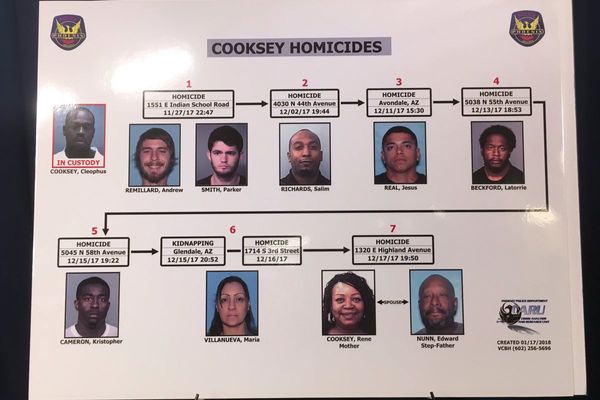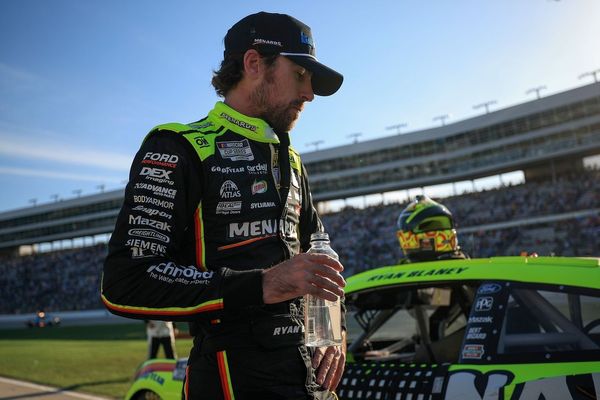
Marital sex! Good marital sex! A nearly teenage son who says “Good morning, Mum” when she arrives downstairs for breakfast and has school-trip forms signed in time and in his bag! A lovely house and two lovely cars! All is apparently well in the house of GP Gemma and her husband Simon, played by Suranne Jones (who has been away from our screens too long) and Bertie Carvel (who is, subtly, everything) which is why you believe in the good marital sex, as well as in everything to come, as Mike Bartlett’s new five-part drama Doctor Foster (BBC1) opened last night.
But then Gemma finds a hair – a longer, blonder hair than her own – on Simon’s scarf. And a strawberry lip balm in his trouser pocket. Is he having an affair? Or did he lend his long, blonde assistant Anna his scarf and buy a slightly gendered lip balm in the chemist because it was the only one left? The latter, surely. Surely.
But Gemma has a toe in the murky waters of doubt now and before long they are lapping at her ankles. Suspicions build – she follows him after work when it becomes clear there is a period between his office closing hours and his arrival home that is unaccounted for, but recede – she finds that he visits his mother in her old people’s home. Then build – she checks his phone; and recede – there’s nothing there.
The dread builds up in layers. Is Gemma paranoid? Is her unethical trading of sleeping pills for a patient’s help in tracking Simon a sign of a mind neither she nor we should trust? Or does a wife always, somewhere, somehow know when something isn’t right? Is Simon sweetly baffled (“Have I done something wrong? You’re acting like I have done something wrong”) or swiftly dissembling? The two leads step nimbly across the shifting sands, daring us to catch up.
It’s a brilliant and gripping portrait of a marriage slowly being poisoned. I shan’t spoil it for those of you who haven’t yet watched it – I know you, for reasons best known to yourselves, still read reviews – but urge you to watch. I’m a little fearful that with its echoes of Congreve’s The Mourning Bride (it ends with the “Heaven has no rage like love to hatred turned / Nor hell a fury like a woman scorned” quotation) it’s going to descend into melodrama in the not-too-distant future, but with leads and support this good, even if it does, I will probably hardly care.
Let us turn from the dramatic mapping of the human heart in all its messy sprawl to the beautifully precise delineations of cartography proper, as laid out by last night’s BBC4 Timeshift documentary, A Very British Map – The Ordnance Survey Story. Oh, the first two-thirds were wonderful. They followed the story of this quintessentially British affair, which began as a military concern (the Board of Ordnance’s first maps were of the southern shores, born out of the threat of Napoleonic invasion in the 1790s), and retained those contours for most of the next two centuries as it turned millions of meticulous measurements into forensically detailed, phenomenally accurate maps of the entire country. The requirement that it be headed by someone with a military background was only dropped in 1974.
Surveyors wore wellies so that they had somewhere to keep their spanners as they climbed to the top of specially constructed towers to take their measurements. They measured every stream. Every field. Every building. Everything in between. Bus stations. Wind pumps. And rubbish dumps. “You drew the bigger boulders at the top,” said draughtswoman Marilyn Becher, who worked for the OS – which, almost uniquely at the time, paid female employees equally to men – from 1956 to 1994. “Then the smaller [ones] next, and dots towards the bottom – to give the impression of a heap.” OS maps distinguish between deciduous and coniferous forests. Why? Because if you can, you do. Don’t you?
It was a study in excellence and the beauty of excellence. Geometry met artistry and created something wonderful. The programme was only marred by the pacing. The decision to spend the last third on the much less compelling recitation of the facts and figures to which the digital age has reduced – along with so much else – the OS story was a bad one. A misguided attempt to add human interest back in by showing us some Scouts trying to read a map wasted more time. Somewhere there is a retired brigadier longing to send that 20 minutes back to the drawing board. He may also require a voiceover that knows how to pronounce “ordnance” and “drawing”. Now, as you were.







